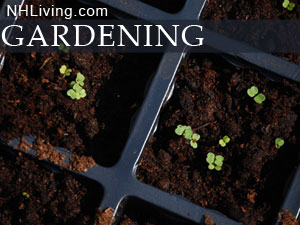NH Indoor Herb Gardens
Growing Herbs Indoors
 The New Hampshire winters are long and the springs can be unpredictable. Such seasonal unpredictability can make garden planning a bit difficult in this Northern New England state. Starting an indoor herb garden in your kitchen can be a great way to start your green thumb early before the snow melts off the ground. Ask us about indoor gardening or share comments. To feature your business, contact us.
The New Hampshire winters are long and the springs can be unpredictable. Such seasonal unpredictability can make garden planning a bit difficult in this Northern New England state. Starting an indoor herb garden in your kitchen can be a great way to start your green thumb early before the snow melts off the ground. Ask us about indoor gardening or share comments. To feature your business, contact us.
Growing Herbs Indoors

 Starting an indoor herb garden can be an interesting and exciting way to get an early start on gardening while waiting for the ground to thaw. There are three main types of herbs. The most popular are the culinary herbs, which are used in cooking. Many other herbs are also believed to possess healing traits. Decorative and scented herbs are favorites to make an area more pleasant. As well as varying in purpose herbs also vary in care and classification.
Starting an indoor herb garden can be an interesting and exciting way to get an early start on gardening while waiting for the ground to thaw. There are three main types of herbs. The most popular are the culinary herbs, which are used in cooking. Many other herbs are also believed to possess healing traits. Decorative and scented herbs are favorites to make an area more pleasant. As well as varying in purpose herbs also vary in care and classification.
While all herbs need plenty of water and sunlight the actual amount that each herb needs varies greatly, so make sure to keep track. Herbs can be classified as annuals, biennials, or perennials. Annuals bloom one season and then die. Biennials live for two seasons but only bloom in their second season. Finally, perennials once they are established over winter bloom each season. Another point to  remember is that perennials do far better if they are put outside during the summer.
remember is that perennials do far better if they are put outside during the summer.
An indoor herb garden needs the same basic things that an outdoor one does. Lots of sunlight and soil that is aerated and not too rich. For sunlight a south or west window would be best. While most herbs need lots of sunlight it does vary so pay attention to this. In the winter try subsidizing with a “grow lamp” or fluorescent light. Place an inch of gravel or mulch at the bottom of each pot. This is to help ensure the good drainage that herbs need. The soil mixture should be one part coarse sand or perlite and two parts
 sterilized potting soil. For a five inch pot add one teaspoon of limestone; this will give the soil the sweetness that herbs need.
sterilized potting soil. For a five inch pot add one teaspoon of limestone; this will give the soil the sweetness that herbs need.
Make sure not to over water the plants, since this will make the roots soggy and is not healthy for them. Instead keep them moist, by misting them for example. Another thing to keep in mind is that if the herbs are in clay pots or hanging baskets they will need more water.
Deciding which herbs to plant can be tricky. Most kitchens use certain herbs the most often, so growing these would make a lot of sense for those who cook often. Still not sure which ones to choose? Check the supermarket for ideas.
There are three main categories for herbs when cooking: strong, accent, and blending. For beginners it would be best to go with some from each category. Winter savory, rosemary, and sage are examples of strong herbs. Accent herbs are just strong enough to enhance the flavoring without being overpowering and include such herbs as sweet basil, dill, mint, tarragon, and thyme. The herbs that are best for blending encompass chives, parsley, and summer savory.
~ Megin K. for nhliving.com
NH Gardening Ideas | Endangerd NH Plants
NH Lodging Guide | Weddings
Products | NH Town Guides
New England Living
Free World Mall
Country Weddings | New England Recipes
Paradise Coast Living | Boston Red Sox Gifts
Vermont Living | ME Living | MA Living






